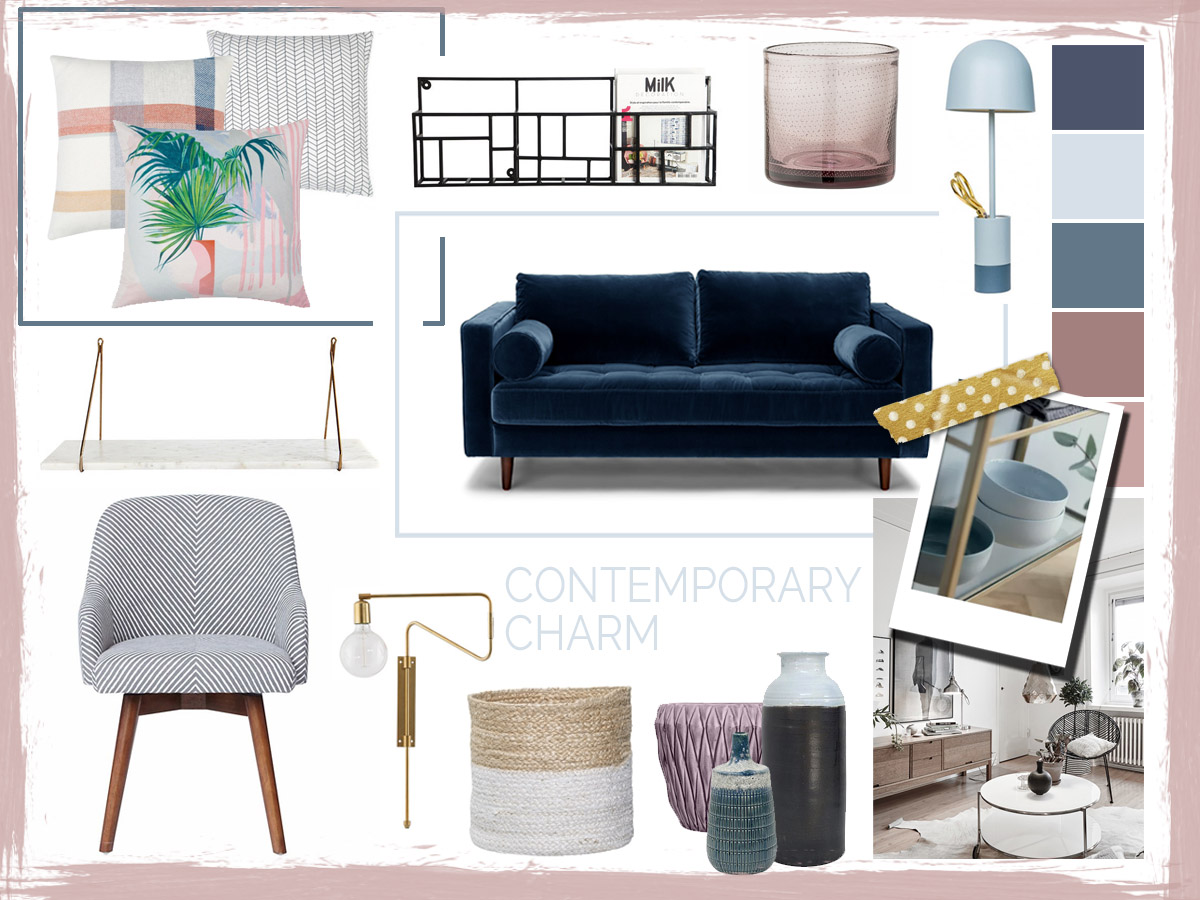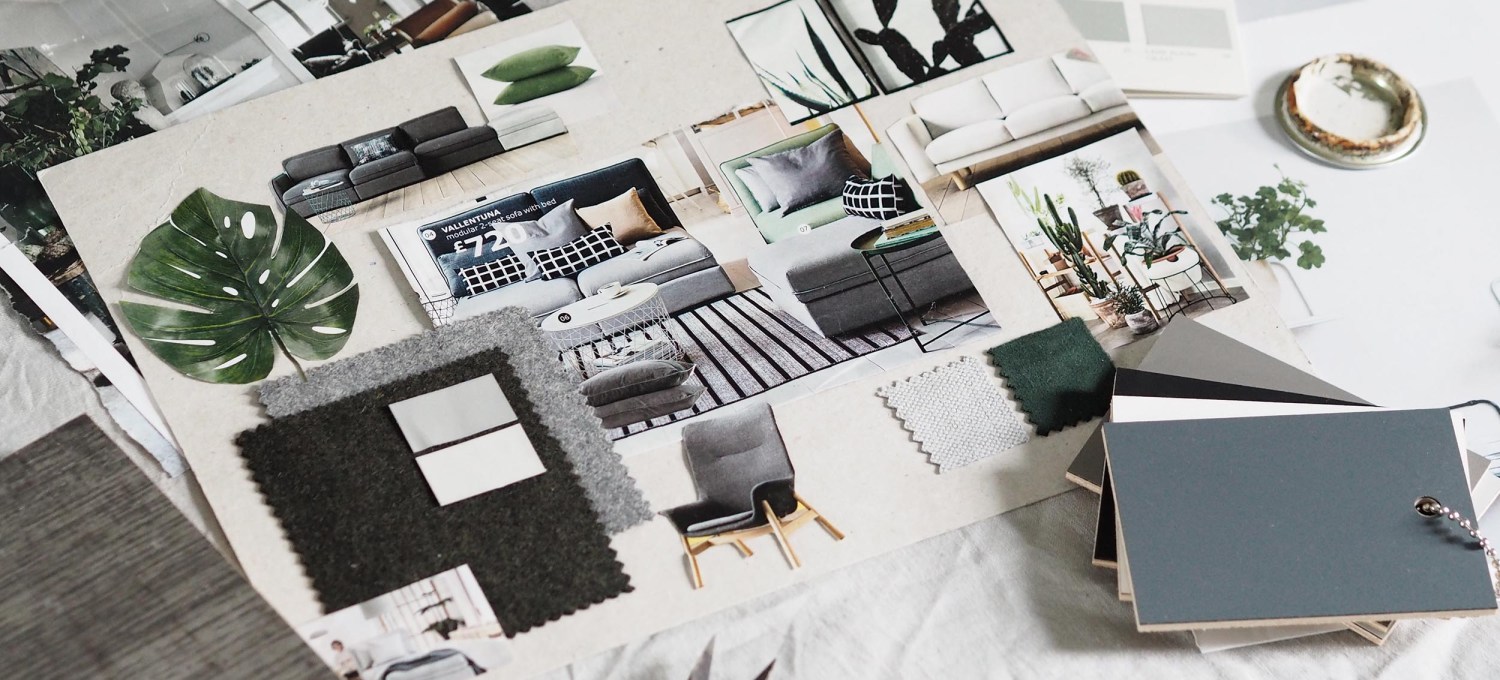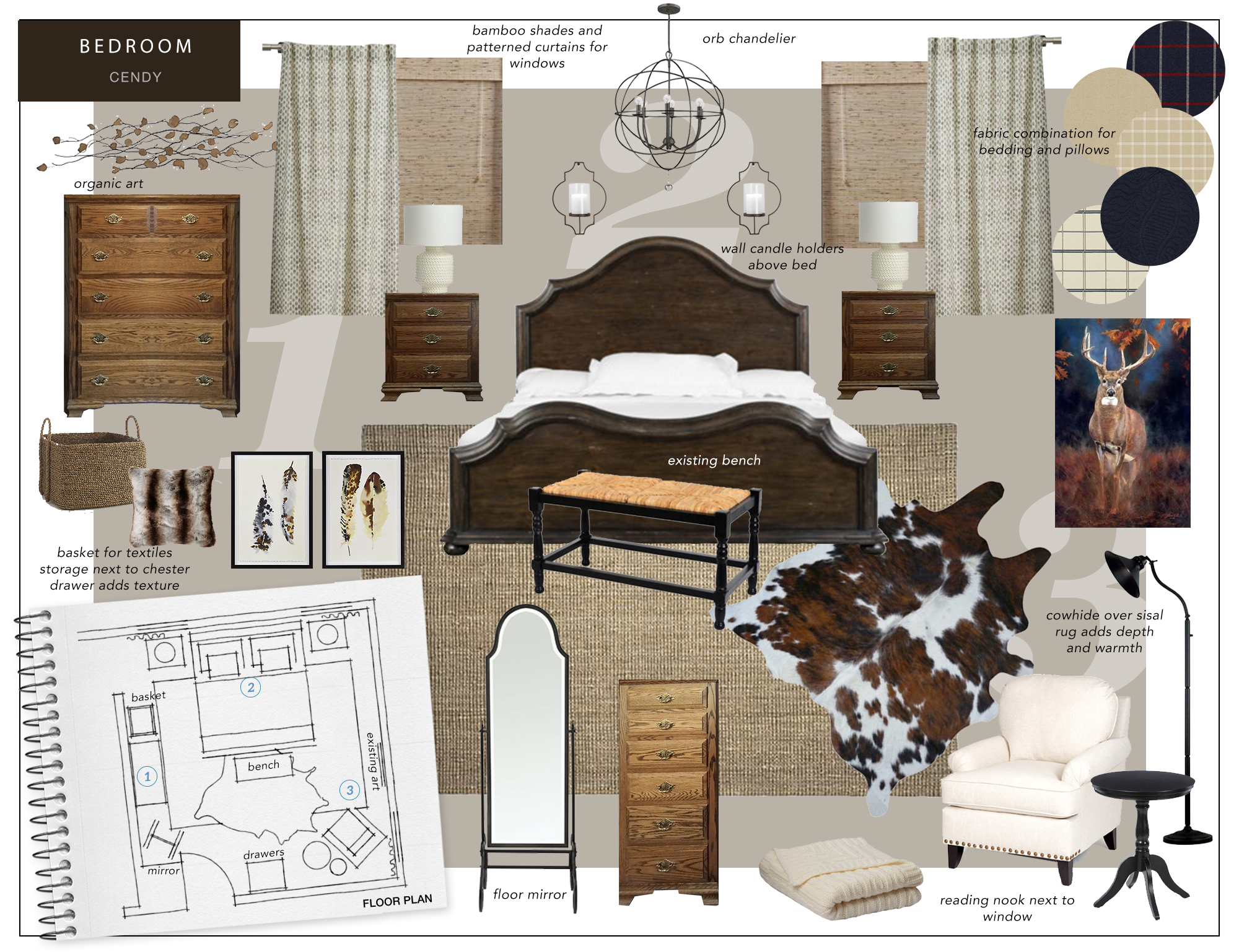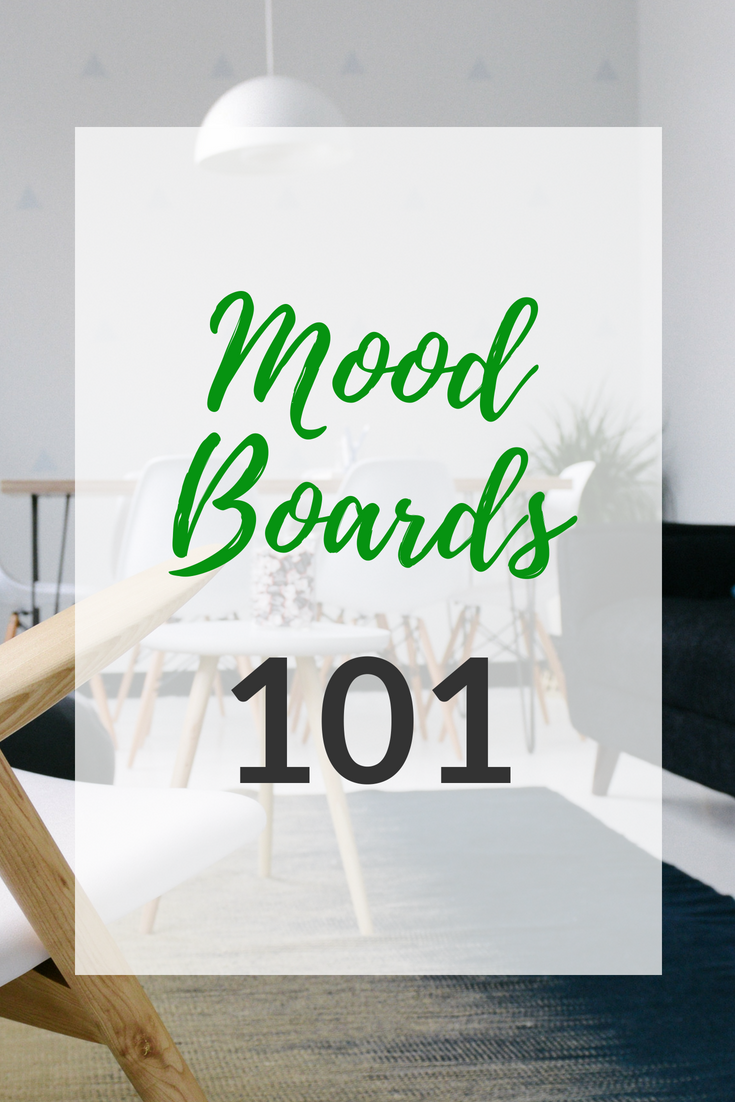
Whether you’re just getting started in your career as a home stager or interior decorator, or just want to remodel your own space like the pros do, making a mood board will be your new secret weapon.
They make your project easier, quicker, and more organized. And they’re fun to make, too!
We use them all the time around here for various projects and we want to teach you exactly why you should be using them, and the step-by-step process to make one!
Why Do You Need A Mood Board
The reason why professional designers swear by mood boards is because they actually work.
Not only do they help you organize your ideas and cut through the overwhelm, they also allow you try out various ideas before committing to something. If you’re trying to break into the home staging or interior design industry, mood boards are a great way to present your ideas to your client – and makes it that much easier to sell them on your services.
Organizing Your Ideas
Have you ever started a design project, or had a spark of inspiration to renovate your home, and been totally overwhelmed by all the ideas? Things like what style to go with, which colors, which fabrics, what kind of accent pieces… It’s easy to have a “I want it all!” mentality, but in execution, that approach usually doesn’t work.
A mood board will help you narrow your focus to a few pieces to help you get rid of that stressed out, indecisive, overwhelmed feeling – which nobody likes.
Testing Different Pieces Together
When you go out to start buying or renting pieces for your newest project, it seems like everything starts calling your name at once. The faux-fur covered ottoman. The colorful oriental rug. The wingback chair with nailhead trim. But… will all these fantastic pieces look good together? Maybe, but maybe not.
Putting all these different pieces together on a mood board will help you visualize how they’d work in the same space. If they don’t work, you can save yourself the money and stress of buying something you’re not crazy about afterall.
For Professionals (Or Soon To Be Professionals)
It can be difficult to communicate your ideas just by explaining them. We all love visuals that go along with and support ideas, and design ideas are no different. If anything, a visual is even more important for design projects. If you’re a home stager, interior decorator, or trying to become one, mood boards are an essential part of the client process.
Your client wants to be able to see what their space will look like. Giving them a mood board to look over and think about will help you get on the same page and speed up the process.
How To Make A Mood Board
Now it’s time for the fun part. Creating your mood board! We’re going to walk you through the entire process, from gathering inspiration, to putting all the pieces together. First, you’re going to gather your images and inspiration, and then you’re going to add them onto the moodboard until you’re happy with the final product, making as many variations as you need.
As for exactly how to make it, if you’re going digital then our favorite tool is Canva. It’s totally free, and easy to use. Just upload your images, and drop them in! Of course, there’s plenty of other ways to make a mood board- you could even use Google Slides or Powerpoint. Whatever you prefer.
As we get into the process of putting the images in, keep in mind that you want to arrange your mood board as close to the actual layout you as possible. Yes, this can be difficult, considering it’s hard to find product images at exactly the same angle, but do your best just to give yourself an idea of the flow of the pieces.
Of course, you can go the traditional paper route as well. Many designers keep a tackboard up in their office to pin photos of products, fabric swatches, trim finishes and more design elements too so they can see in real life the pieces coming together.
Gather Your Inspiration
Before you can create your mood board, you need to gather images and inspiration for how you want your space to look.
A great place to do this these days and a favorite of many interior decorators and designers is on Pinterest! It’s filled with images of incredible spaces, and will really get your creativity flowing. It’s like clipping thousands of magazine pages, without having to fill up all those binders!
Type in whatever term in the search bar (a style, a color, a room type, etc.) and pin any images you like to a new board to keep them all together. This will make it easier to go through and save the images you want to include on your mood board later.
Give us a follow on our Pinterest page too. We’ve got our boards organized by room and furniture style to make it easy on you to find exactly what you need!
As well as finding inspiration images, you should also find images of pieces you think you might want to incorporate into your space. Don’t limit yourself just yet- save everything you think you might like! You can work on narrowing things down when you get to the actual mood board.
–
Now that you’ve gathered your images, it’s time to really get started.
Add Existing Pieces
The first step for creating your mood board is to add in existing pieces, if there are any you are going to keep in your new design.
If you’re redecorating your bedroom for example, maybe you know you really want to keep your current bedframe and headboard. Make sure to put that in first, because everything else will revolve around that, and has to match it.
You might not have any existing pieces if you’re designing your space from scratch, or staging an empty home. If so, go ahead and move to the next step.
Add The Biggest Statements
The next step is to add the biggest statements / focal points of the room. This could be anything from a piece of furniture you know you want to incorporate into the space, a dramatic accent wall color, or a vibrant rug.
If you’re not sure which statement you want to add to your space, at this point branch off into different mood boards. Make as many as you need! Fill them all out, and see which one you like best! That’s the beauty of a mood board. It allows you to try out multiple ideas, risk-free, and see which one is your favorite.
Fill In The Details
Once you’ve got your pieces that are staying, add your accent pieces in to start filling in the details. This can be things like paint colors, smaller furniture pieces, decorations, and art.
If you’re feeling conflicted about certain pieces at this step, instead of making separate mood boards for each option, go ahead and put them on the same one. These smaller accents aren’t as bold as your big statements, and seeing them side by side along with everything else on your mood board will make it easier to choose your favorite!
And that’s it! You’re done! As simple as that.
Making mood boards will be a game changer for you in your design process if you aren’t already using them, and we hope this post was helpful!
If you ever need any extra design inspiration for your mood boards (because you can never have too much of that) follow us on Instagram and Pinterest, where we share gorgeous interior shots all the time! And of course, our design team is always on call to help you out if you want us to do the decorating for you, so you can save time on all of those Pinterest recipes you found but have yet to try. Just stop by the showroom with some photos of your space and we can get you all set up, mood board and all!





